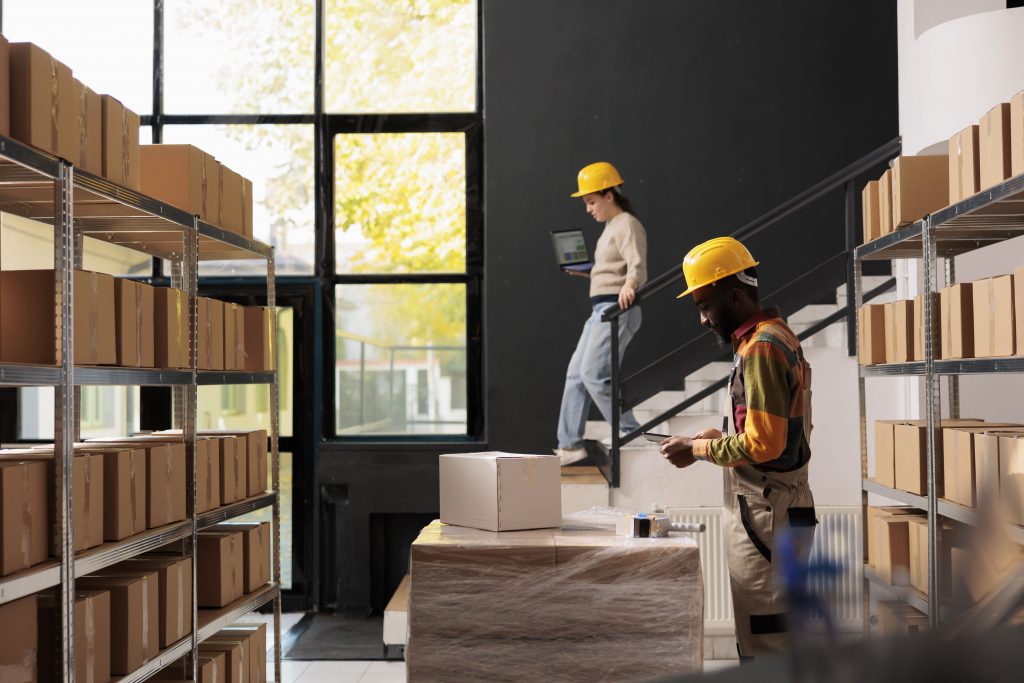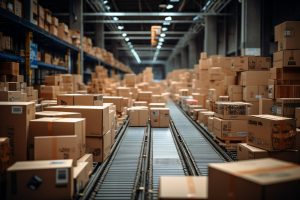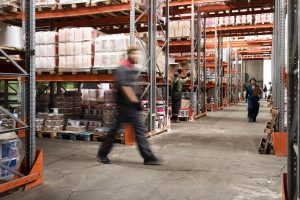With 2024’s mid-point nearing, MFCs have arrived for those enterprises aiming at generating an agile delivery chain in the fast-changing e-commerce and retail logistics industry.
This blog reviews the current status of MFCs and outlines five major trends that will redefine the industry this year. We will see how companies are looking to transform their order fulfillment strategies through the addition of next-generation AI-driven inventory management and eco-friendly last-mile delivery solutions.
What is Micro-Fulfillment?
Micro-fulfillment is a logistic strategy in which small-scale warehouses with slashed distribution centers are established near urban areas and closer to the consumers for quick delivery of products ordered online. Companies manage to cut the cost of transportation drastically by setting up such compact facilities in densely populated areas as well as cutting delivery times. With a global market size valued at $2.1 billion in 2021 and projected to skyrocket to $88.3 billion by 2031, growing at a staggering CAGR of 44.8%, micro-fulfillment is not just a trend; it’s the future of supply chain management.
5 Trends in the World of Micro-Fulfillment Centers
- E-Commerce Expansion Propels Micro-Fulfillment Market Growth
The explosive growth of e-commerce has created an unprecedented demand for efficient order fulfillment solutions. Traditional distribution methods, predicated upon large, centralized warehouses, simply can no longer keep up with the dynamic consumer expectations for fast and cost-effective delivery. All this formed the foundation for micro-fulfillment centers located in areas of high density, enabling fast and profitable deliveries. Some compelling consumer behaviors underpin this shift:
- 69% of consumers are less likely to shop with a retailer again if a purchase wasn’t delivered within two days of the date promised.
- 63% of online shoppers cite excessive shipping fees as a reason for canceling purchases.
- 38% of online shoppers will abandon their order if the delivery takes longer than a week.
The statistics underline the acute need for retailers to implement micro-fulfillment strategies in order to remain competitive and keep up with customer demand in the rapidly changing environment of e-commerce.
- Integration of Advanced Technologies
AI is changing inventory management and demand forecasting. Due to predictive analytics, adjustments to inventory levels can now be made in real time. ML algorithms analyze huge reams of customer data and purchasing trends, providing a business with the ability to accurately forecast changes in demand and adjust stock accordingly. RPA eliminates some of these tedious back-end operations by automating tasks like order processing and inventory tracking, thereby reducing human error and increasing the speed of work. In addition, the deployment of autonomous mobile robots (AMRs) and advanced conveyor systems adds to the physical aspects of fulfillment operations.
- Focus on Sustainability
The strategic locations near population centers cut down the time for last-mile delivery drives which in turn also saves fuel and carbon emissions. It’s a solution that is not just environmentally friendly but also economically apt. Furthermore, micro-fulfillment facilities have facilitated online trading in perishable goods like groceries, further reducing food wastage while bolstering local economies. According to “The Sustainable Last Mile” by Accenture, if implemented, local fulfillment facilities may reduce all-mile emissions by 17%-26% by 2025. This trend towards sustainable micro-fulfillment comes at a time when consumers are more and more demanding in terms of eco-friendly shopping and companies’ responsibility towards fighting climate change.
- Customization and Personalization
The focus of micro-fulfillment centers is fast shifting to customization and personalization to suit the needs of individual consumers. Such proximity also allows companies to create localized inventories encompassing the top picks of particular groups. For instance, a micro-fulfillment center situated in a college town may stock most of its inventory with energy drinks and quick snacks, while another set next to a family-oriented neighborhood deals in bulk grocery items and baby products. This model allows retailers to offer customers not only personalized product assortments but also raises customer satisfaction because of the availability of a set of products.
- Urbanization and Space Optimization
There is a greater need than ever for effective urban logistics solutions, as 80% of Americans now live in cities and contribute significantly to the GDP of the country. Urban populations are expected to increase to more than 68% of the world’s population by 2050, following a long-term worldwide trend. The optimization of space through innovative technologies thus becomes an imperative need, to which micro-fulfillment centers are rising up. These include vertical storage solutions, modular designs that can be easily changed out, and repurposing of city structures already built, like parking garages or unused retail spaces. Some companies are even looking at underground or rooftop fulfillment centers to maximize space utilization in densely populated areas.
Conclusion
Fast-paced change in e-commerce, technological innovation, sustainability concerns, personalization trends, and increasing urbanization are powerful drivers of the micro-fulfillment world. The year 2024 enters with five key trends that will reshape the way companies handle order fulfillment to attain faster deliveries, improved efficiency, and customer satisfaction. Companies that adapt to these changes, embracing innovative micro-fulfillment strategies, would be better placed to meet growing modern consumers’ demands and thrive amidst stiff competition in the retail environment.
Need a solution to level up your retail fulfillment strategy? Enter Carte+, the game-changing technology at the core of data-driven inventory management. At an instant-delivery-like-never-before age, Carte+ seamlessly automates and optimizes your omni-channel fulfillment. Our highly advanced system turns your store footprint into a “cloud” of physical inventory so you can flow it fast and frictionless to last-mile delivery.
Avoid methods of fulfillment that will definitely become an erosion vector of your profits. Experience the difference of Carte+ in staying ahead of the curve in micro-fulfillment. Today, reach out to us to learn more about how Carte+ can help you power your fulfillment strategy, meet on-demand expectations, and drive your retail growth toward new heights.





